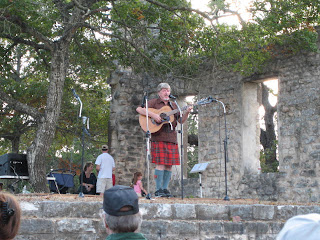Irish McMillin's from Northern Ireland
I grew up being told that our line of McMillin's came from Ireland, but no one mentioned where in Ireland. So I started searching high and low, but I kept running into twists and turns that became a confusing mix of spellings of the McMillin name. There are a lot, and I've mentioned that in earlier posts.
To compound the issue, there are MacMillan's in Scotland as well. That made things even more difficult. And the results strongly suggest that we are both Scotch and Irish, and we go back a very long way.
But where exactly did my immediate family tree start from?
The other night I started searching again and happened on a site that probably pinpointed the area of Ireland most of us can trace back to, at least to the mid 19th century. But it's not where I thought it would be.
It's in Northern Ireland.
More specifically, in counties near Belfast: County Down and County Antrim and a couple of others.
The specific villages I don't recall now but I will look them up again and update them here.
Here's the chart of counties surrounding Belfast.
While I was at it, I went to Google Earth and employed their Street View so that I could electronically tour the area. I was actually seeing the roads and buildings and hills and fields that my forefathers saw every day. It felt both odd and wonderful at the same time. I wished Google could take me back a couple of centuries so that I might actually see some of my family.
Perhaps some of my relatives attended this church and are buried its cemetery. We will never know for sure until we search and find out for ourselves.
Alas, whatever new technology they come up with next probably won't be going back in time. But as I traveled down the streets I could tell that many of the buildings were ancient. They could have well housed my ancestors. Maybe they still do.
If I ever make it to Ireland, now I have specific places to go.
And wouldn't you know it, the very moment I thought I had finished this post an article suddenly showed up on my home screen challenging the history of the Irish. Here's the link to the story: http://www.msn.com/en-us/news/world/a-man%E2%80%99s-discovery-of-bones-under-his-pub-could-forever-change-what-we-know-about-the-irish/ar-BBqzg1K?li=BBnb7Kz
And no sooner than I'm three paragraphs into the article, I learn that it began with the finding of a grave in County Antrim, Northern Ireland, one of the counties where my McMillin ancestors lived.
That could change everything about where my ancestors actually originated. This St. Patrick's Day sure has been full of surprises.
Also see:
http://www.bbc.com/news/science-environment-35179269
http://www.sott.net/article/263587-DNA-shows-Irish-people-have-more-complex-origins-than-previously-thought
https://www.theguardian.com/science/2015/dec/28/origins-of-the-irish-down-to-mass-migration-ancient-dna-confirms
http://www.bbc.com/news/science-environment-35179269
Video: https://www.youtube.com/watch?v=SAnLST3BTjo



































